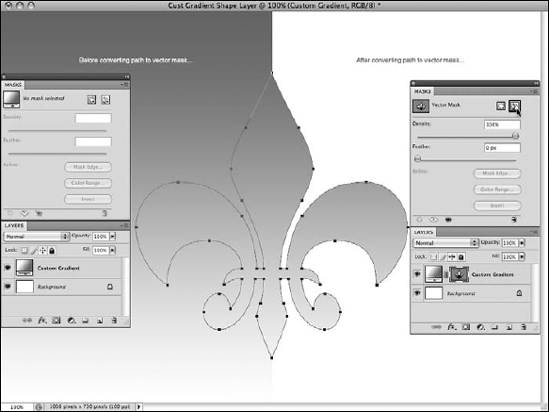12.1. Vector Shapes Defined
As it happens, while vector shapes do require vector tools for their creation, they are not really "shape objects" at all. Adobe discovered a creative way to create the appearance of solid shapes, using a color fill layer with a vector mask applied to the fill. These two elements together create what is known as a vector shape layer. But this is just the default setup; you can also create vector shape layers based on gradient fills and pattern fills.
I discuss how to create and use these shape layers later in the chapter, but for right now let's dissect things a bit. Figure 12.1 shows a vector path based on a Fleur de Lis shape preset, with a gradient fill layer applied to the entire document. At right, the Layers panel shows what happens when you apply the vector shape as a layer mask. The net result is that any part of the document outside of the mask is hidden, thus creating the perceived shape.
Figure 12.1. Though they appear to be solid-shaped objects, vector shapes are actually simple fill layers, with a vector mask that allows only a portion of that fill to show through.

This means that whenever you alter the contours or the position of the shape layer's vector mask, you alter the shape itself as it appears over the canvas. Notice in Figure 12.2 how the shape looks different once the vector path is modified.
Figure 12.2. Vector shape layers ...
Get Photoshop® CS4 Bible now with the O’Reilly learning platform.
O’Reilly members experience books, live events, courses curated by job role, and more from O’Reilly and nearly 200 top publishers.

